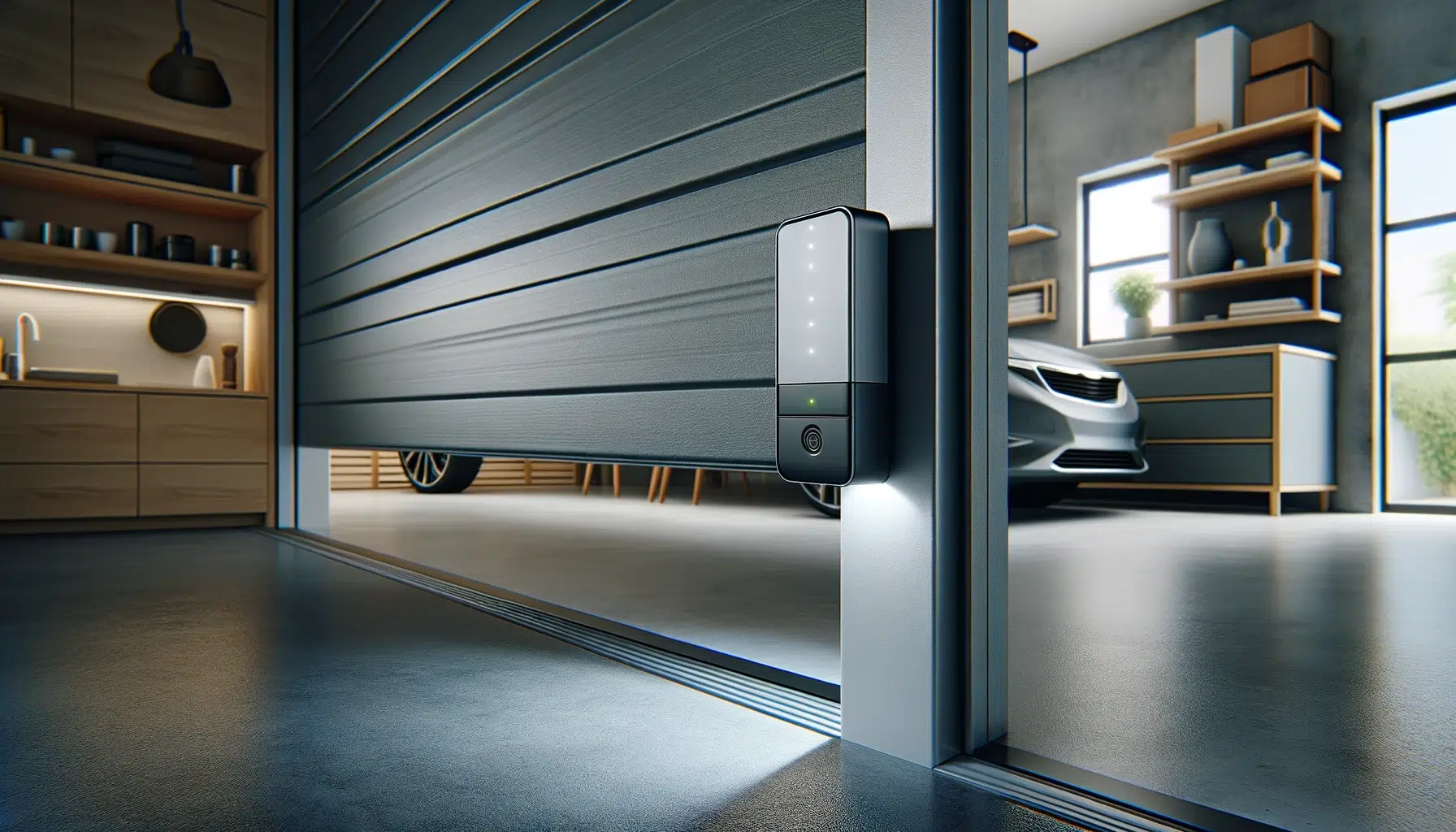
7 Common Issues for Garage Door Sensors 2024
Ensuring your garage door works smoothly isn’t just about convenience; it’s a matter of safety too, especially when it comes to those little gadgets known as garage door sensors. Sure, they might seem minor in the grand scheme of things, but when they start acting up, it’s more than just an annoyance—it could be dangerous. So, let’s get down to brass tacks and talk about the seven most common headaches these sensors can cause, and how you can fix them.
Whether it’s sensors that won’t see eye to eye, wires that have seen better days, or just the sun getting a bit too nosy, knowing what to do can save you a lot of hassle and keep your garage as safe as can be. Ready to dive in? We’re going to break down these pesky problems one by one and give you the lowdown on how to get your garage door back on track.
Dealing with a finicky garage door can drive anyone nuts, especially when the problem lies with those tiny yet critical sensors. They’re the unsung heroes preventing our garage doors from having a mind of their own, closing on our cars, or worse, on us. But even heroes have their off days, and when that happens, it’s up to us to step in and sort things out. Stick with me as we tackle the seven biggest sensor-related issues that can throw a wrench in your day, complete with easy-to-follow fixes.
Let’s make sure our garage doors keep doing their job without any drama.
1. Misaligned Sensors
The classic case of misaligned garage door sensors. Picture this: two sensors, supposed to be in perfect harmony, shooting an invisible laser tag beam across your garage door. If something blocks that beam or if they’re not exactly eye-to-eye, your garage door throws a fit and refuses to close. It’s like they’re in a silent standoff, and your car is trapped outside as a result. So, what do you do? You play matchmaker and get those two back in line. Check if they’re looking straight at each other, with those little LED lights on them serving as a sign that peace has been restored. If those lights aren’t happy, nudge the sensors gently until they are. It’s all about making sure they’re aligned, so your garage door knows it’s safe to close.
2. Dirty Sensors
Just like anything in your house, these sensors can get grimy. Dust, spiderwebs, you name it, can fog up the sensors’ “vision,” messing with the beam. The fix? A bit of spring cleaning. Grab a soft cloth and some mild cleaner, and give those lenses a gentle wipe-down. Steer clear of the strong stuff, though; harsh chemicals are no friend to your sensors. Just a little TLC can go a long way in keeping that beam clear and your garage door gliding smoothly.
3. Wiring Problems
Ever feel like your garage door sensors are just not listening to you? Well, sometimes the issue is as straightforward as faulty wiring or those sneaky loose connections. It’s like trying to have a conversation with your headphones unplugged; something’s bound to get lost in translation. Take a moment to play detective and give those wires a once-over. Spot any frays or loose ends? If you’re handy with a screwdriver and can tell you’re positive from your negative, you might just tighten up those connections or swap out the bad wires yourself. If not, no shame in calling a professional to handle the job.
4. Sunlight Interference
Then there’s the sun, the ultimate frenemy of garage door sensors. Picture this: a beautiful sunny day, not a cloud in sight, and your garage door sensors decide to go on strike. Why? Because the sun’s blasting them with a spotlight, and those infrared beams just can’t compete. The fix? MacGyver a little sunhat for them out of cardboard or something similar. Just make sure you’re not throwing shade on their ability to see each other, or you’re back to square one.
5. Sensor Malfunction
Sometimes, despite all your cleaning, aligning, and wire-checking efforts, those sensors still act up. They’ve seen better days, and like all of us, they’re not immune to the effects of time or a rough life. If you’ve crossed off all the troubleshooting tips and they’re still giving you the cold shoulder, it might be time to part ways. Don’t worry; finding their replacement isn’t a quest. A quick trip to your local hardware store or a few clicks online, and you’ll have a fresh pair ready to install, keeping your garage door moving smoothly once again.
6. Obstructions
Ever had one of those facepalm moments when you realize the biggest problem is actually the simplest one? That’s exactly the case when your garage door decides it’s not moving an inch, all because something’s in the way. It could be anything from a forgotten skateboard, a pile of leaves, or even a tiny build-up of dirt that’s throwing a wrench in the works. Make it a habit to do a quick sweep of the garage floor and a visual check around those sensors. It’s all about keeping that invisible path clear for an unobstructed “conversation” between the sensors and ensuring nothing physically stands in the way of your garage door’s smooth operation.
7. Manual Override Engaged
Now, here’s a twist: your garage door might be acting up not because something’s wrong with it, but because it’s been told to ignore its sensors. If you’ve flipped it to manual override (maybe during a power outage, and forgot?) , it’s like telling your garage door to just do its thing, no need to listen to the sensors. Switching it back to automatic mode is usually a breeze; just check your opener’s manual for the how-to. This way, you’re letting your garage door know it’s time to get back to listening to its trusty sensors.
Getting to know these typical sensor snags and how to fix them is like giving yourself a master key to a smoothly operating garage door. A little bit of regular TLC, like keeping things clean and in line, can ward off most troubles. But hey, if you ever find yourself scratching your head, unsure of what to do next, there’s absolutely no harm in calling in a pro. Sometimes, bringing in an expert is the best move to keep your garage door, and by extension, your day, running without a hitch.
Conclusion
Wrapping it all up, and keeping your garage door in tip-top shape means getting to grips with the usual suspects that throw a spanner in the works for garage door sensors. Whether it’s getting them to see eye-to-eye, keeping them clean, ensuring the wiring’s up to snuff, or shielding them from too much sun, a bit of detective work and elbow grease can go a long way.
Making routine checks and upkeep part of your home care routine can head off most troubles at the pass, making sure those sensors keep doing their job and keeping your comings and goings smooth and safe. But, if you do run into a sticky wicket that’s beyond your fix-it skills, there’s no shame in calling in a pro. Sometimes, getting that expert touch is just what the doctor ordered to keep your garage door humming along perfectly.



